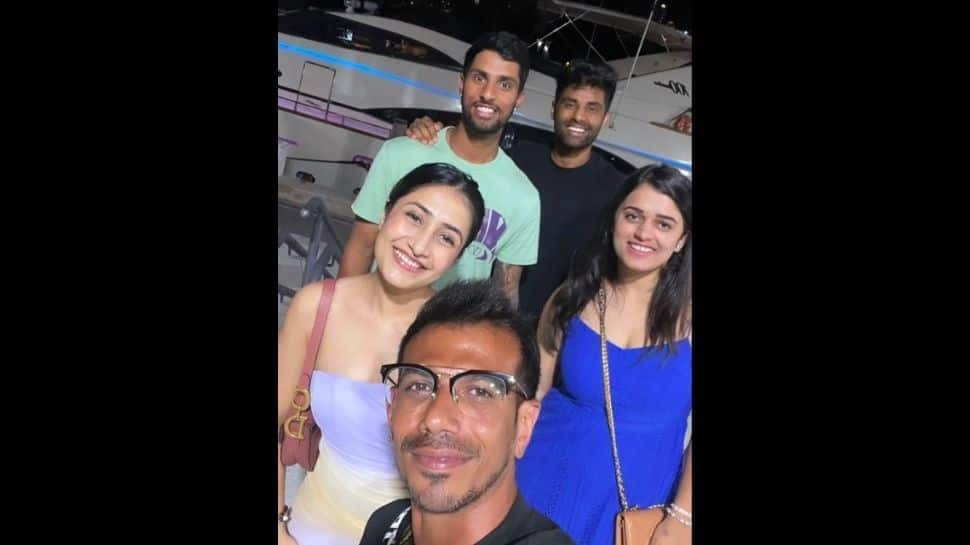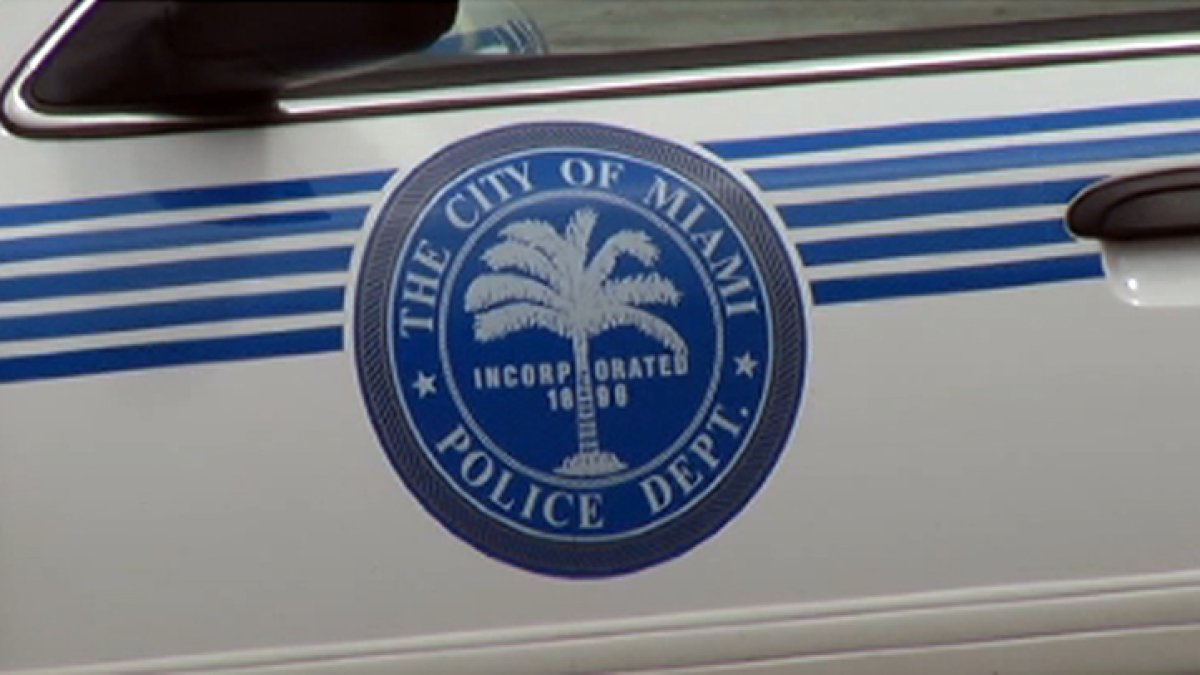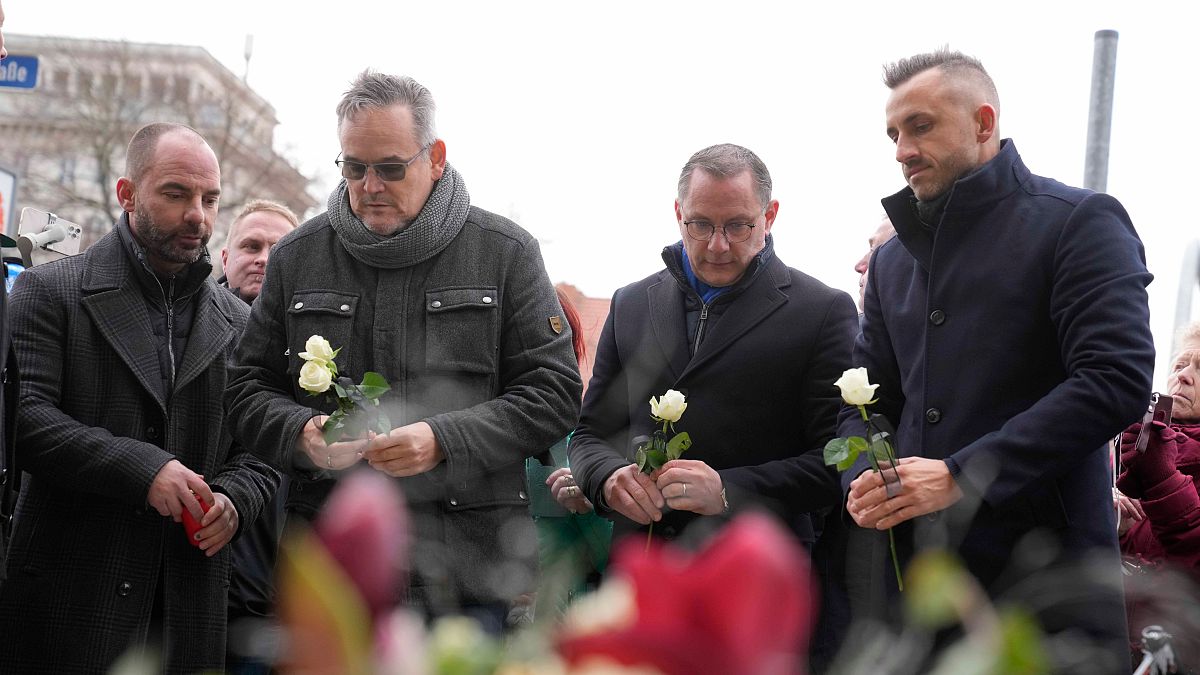Miami, FL
India Vs West Indies 4th T20: Tilak Varma Hits Miami Streets With Suryakumar Yadav, Yuzvendra Chahal And Their Wives Devisha Shetty And Dhanashree Verma, PIC Goes Viral

Team India cricketers and their wives and girlfriends (WAGS) have landed in Miami for the fourth and fifth T20I match against West Indies at the Fort Lauderdale Stadium in Florida on Saturday and Sunday. India are trailing hosts West Indies 1-2 in the five-match T20I series but kept the series alive with their seven-wicket win in the third T20I match in Guyana on Tuesday.
Young Tilak Varma is the leading run-scorer for India in the T20I series so far, scoring 139 runs in 3 matches after making his international debut in the first game last week. Tilak Varma hit the Miami streets on Thursday days with his teammates Yuzvendra Chahal and Suryakumar Yadav along with their wives Dhanashree Verma and Devisha Shetty.
Dhanashree Verma shared an adorable pic with all five off them at the Miami docks on Thursday ahead of the fourth T20I match on Saturday. The picture soon went viral on social media.
Check Dhanashree Verma’s picture with Tilak Varma, Suryakumar Yadav, Yuzvendra Chahal and Devisha Shetty HERE…
Dhanashree Verma and Devisha Shetty have joined the Indian cricketers on their USA leg of India’s tour to West Indies. Hardik Pandya is leading the Indian team in the five-match India series with Rohit Sharma and Virat Kohli given a break ahead of Asia Cup 2023 later this month.
Tilak Varma is already the second highest run-getter among Indians behind Deepak Hooda who achieved 172 runs in 3 matches.
With the last two matches of the T20I series set to take place in Fort Lauderdale in Florida, USA over this weekend, Tilak Varma can smash a massive record held by former Indian captain Virat Kohli in a five-match T20I series. Kohli holds the record for Indian batter with most runs in a five-match T20I series – scoring 231 runs with 3 fifties in a series against England in 2020-21.
Meanwhile, Rohit Sharma feels that ‘SKY’ is a match-winner in ODI cricket as well and the team management is trying to create a situation for him where he feels comfortable.
“For a player like him, it is our job to create such a situation and scenario — ‘It’s okay, if you don’t do well in 2-3 games we are okay, but when you come off, we know that you will win games straightaway’. That is what he did in the third T20I, the batters at the top got out and for Surya to go and bat like that… it is a different format. But we will also have to see how long we can stretch this (having Suryakumar at No. 4),” Rohit Sharma said at an event in Mumbai.

Miami, FL
Miami Police lieutenant arrested on domestic violence charge

A Miami Police lieutenant has been arrested on a domestic violence charge after he allegedly spit at and slapped his wife.
Lt. Thomas L. Carroll, 47, was arrested Saturday on a battery – domestic violence charge, an arrest report said.
Miami-Dade Corrections
According to the report, Carroll and his wife were involved in an argument when Carroll allegedly spit at her around 10 times.
He also allegedly slapped her twice in the face, the report said.
The wife ran out of the house and called police. The report said she didn’t have visible injuries but added that two witnesses corroborated her allegations.
Thomas was booked into jail and later released. Attorney information wasn’t available.
In a statement, Assistant Chief of Police Armando Aguilar said Carroll was relieved of duty pending further investigation.
“The Miami Police Department is committed to serving victims of domestic violence and holding the perpetrators of such crimes accountable for their actions. When acts of domestic violence are perpetrated by law enforcement officers, they are especially disheartening, as they represent a breach of the sacred trust placed in us by the people we serve,” Aguilar said in a statement. “We wish to thank the victim and witnesses in this case for coming forward. We are committed to ensuring that a thorough investigation is conducted and that the victim receives all necessary support throughout this process.”
Aguilar said Carroll was at one point an assistant chief of police but has been a lieutenant in the field operations division since 2023.
Miami, FL
Miami Marlins acquire top prospects INF Starlyn Caba and OF Emaarion Boyd from Philadelphia Phillies

Caba, 19, hit .228 (61×268) with a .385 on-base percentage, 10 extra-base
Miami, FL
South Florida 11 p.m. Weather Forecast 12/21/2024

Watch CBS News
Be the first to know
Get browser notifications for breaking news, live events, and exclusive reporting.
-

 Politics1 week ago
Politics1 week agoCanadian premier threatens to cut off energy imports to US if Trump imposes tariff on country
-
/cdn.vox-cdn.com/uploads/chorus_asset/file/25789444/1258459915.jpg)
/cdn.vox-cdn.com/uploads/chorus_asset/file/25789444/1258459915.jpg) Technology1 week ago
Technology1 week agoOpenAI cofounder Ilya Sutskever says the way AI is built is about to change
-

 Politics1 week ago
Politics1 week agoU.S. Supreme Court will decide if oil industry may sue to block California's zero-emissions goal
-
/cdn.vox-cdn.com/uploads/chorus_asset/file/25546252/STK169_Mark_Zuckerburg_CVIRGINIA_D.jpg)
/cdn.vox-cdn.com/uploads/chorus_asset/file/25546252/STK169_Mark_Zuckerburg_CVIRGINIA_D.jpg) Technology1 week ago
Technology1 week agoMeta asks the US government to block OpenAI’s switch to a for-profit
-

 Business1 week ago
Business1 week agoFreddie Freeman's World Series walk-off grand slam baseball sells at auction for $1.56 million
-
/cdn.vox-cdn.com/uploads/chorus_asset/file/23951353/STK043_VRG_Illo_N_Barclay_3_Meta.jpg)
/cdn.vox-cdn.com/uploads/chorus_asset/file/23951353/STK043_VRG_Illo_N_Barclay_3_Meta.jpg) Technology1 week ago
Technology1 week agoMeta’s Instagram boss: who posted something matters more in the AI age
-
News1 week ago
East’s wintry mix could make travel dicey. And yes, that was a tornado in Calif.
-
/cdn.vox-cdn.com/uploads/chorus_asset/file/24924653/236780_Google_AntiTrust_Trial_Custom_Art_CVirginia__0003_1.png)
/cdn.vox-cdn.com/uploads/chorus_asset/file/24924653/236780_Google_AntiTrust_Trial_Custom_Art_CVirginia__0003_1.png) Technology2 days ago
Technology2 days agoGoogle’s counteroffer to the government trying to break it up is unbundling Android apps




















